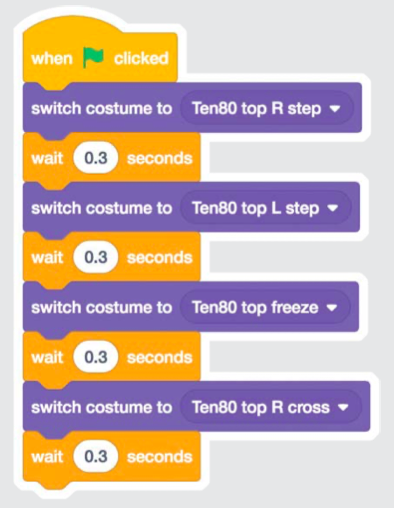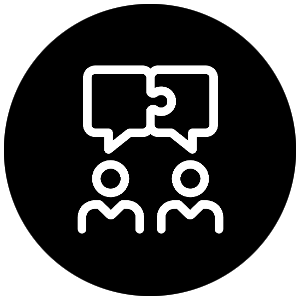WMSI STEM Corner
This page is all about at home fun activities for all ages! Scroll down to see some of our favorite easy projects!
Do it Yourself Catalog
Have a question? feel free to contact us here
Stop Motion Animation
Videography • Art • Story Creation
About: Not all movies need a big budget! With the use of only a few simple items and students' creative minds, we can delve into the world of videography and create some incredible stop motion animation movies utilizing free apps on cell phones and tablets. Let legos dance, make drawings on a whiteboard move, or have cardboard cutout figures fly through the air! Students will work as a team and become the directors of their very own one-of-a-kind stop motion animation blockbuster!
What You'll Need:
An app for animation. Try Stop Motion Studio (Free version, IOS)
A background. Try large pieces of paper, or a whiteboard!
Something to animate! Try LEGO pieces or clay.
Tutorials:
Watch the video on the right side of the screen —>
Visit this link: https://tinkerlab.com/easy-stop-motion-animation-kids/
Tips from a Maker:
Try to make small movements between every picture. This will lead to a very smooth video
Instructional video above created by Madeline Ellms, WMSI Developer
Wiggle Bots
Motion • Wiring • Robotics
About: kids will delve into the creative process by designing robots that move on their own using only a single motor. They'll have an array of everyday materials to choose from, along with an assortment of gears, in order to create their unique "wiggle bot". The design may or may not work the first time, but that's where engineering comes into play! Students will troubleshoot each other's designs and seek out creative solutions, ensuring all bots are wiggling and drawing by the end!
What You'll Need:
Wigglebot Kit (here's one for $11)
Tape
AA Batteries
Markers & Paper
Recycled Materials
How You Can Make It:
Build video directions are here (scroll down)
Skittle Study
Messy • Diffusion • Patterns
About: Want to explore how things react in water? Play with some super useful candy? Check out this cool skittles activity!
What You'll Need:
Plates
Water
Skittles
How You Can Make It:
Place skittles around the plate. Choose a fun color pattern and arrangement shape. Pour water over the skittles and observe what happens! Can you explain it?
Tips From a Maker:
What happens if you shake it?
Use another liquid instead of water; does that change anything?
Scratch Intro: Dance Party
Coding • Loops • Motion
About: Scratch offers a chance to start basic coding, background design, and character design! One great way to celebrate all that Scratch has to offer is by creating your very own dance party. We highly recommend looking through some of the tutorials (found next to the lightbulb in the upper left-hand corner) before you begin this adventure. Let’s get funky!
What You’ll Need:
Device with browser
Creativity!
How You Can Make It:
Follow these steps featured to the right —> to start creating your very own dance party! (Code blocks enlarged below).
Tips From a Maker:
Can you try changing the code to match with the beat of the music?
Add more dancers to the party with different moves!
What about adding some background changes?
What other codes could you use to make your sprites dance? (hint: motion!)
Make your party interactive by experimenting with different events.
Scratch Intermediate: Make it Rain!
Computer Programming • Nature • Storytelling
About: Scratch is a great place for creating stories. In this tutorial, Coltrane Stagg, one of WMSI’s veteran interns, will take you through the process of creating a rain animation on Scratch! This code would go well with a larger story of what’s happening in your backyard during a rain storm. Can you create a sprite that shows where water is flowing? What are the birds up to while it’s raining? How about a dog?
What You’ll Need:
Device with browser
A visit to Scratch.mit.edu/create
Creativity!
How You Can Make It:
Follow these steps featured to the right —> to start creating your very own nature story!
Still a little confused? Check out Coltrane’s video tutorial! (bottom right)
Tips From a Maker:
Can you try adding characters to your code? What are they doing while it rains?
What other codes could you use to make a better ecosystem/backyard story?
Can you make your rain story interactive with other events? What might you trigger with some button presses?
Scratch Intermediate: Worm Game!
Computer Programming • Nature • Gaming
About: Scratch is a great place for creating stories. In this tutorial, Coltrane Stagg, one of WMSI’s veteran interns, will take you through the process of creating a worm game on Scratch! This code would go well with a larger game, perhaps with walls, power-ups, multiple levels, etc.
What You’ll Need:
Device with browser
A visit to Scratch.mit.edu/create
Creativity!
How You Can Make It:
Follow these steps featured to the right —> to start creating your very own worm game!
Still a little confused? Check out Coltrane’s video tutorial! (bottom right)
Tips From a Maker:
Can you try adding characters to your code? What if the worm collected something?
Can you make your worm interact with other characters?
Paper Airplanes
Aerodynamics • Flying Objects • Outdoor Activities
About: Most kids know how to make a basic paper airplane and fly it, but there are an infinite number of ways to fold a piece of paper, so why stop there? For those wanting to get a little more creative with their airplane design, we have included a list of 50 new plane ideas that you’ve probably never heard of. Aspiring young pilots will be able to get hours of fun out of this activity.
What You'll Need:
A bunch of sheets of paper (standard printer paper works best)
A pair of scissors
A roll of tape
Some paper clips (optional)
An open space like a backyard
How You Can Make It:
Tips From a Maker:
What happens when you add a paper clip to the front of the plane? Somewhere else? What if you add multiple paper clips in different places?
What happens when you throw the plane differently, like with an upward or downward angle?
What happens when you bend the wings slightly, and have the left one higher then the right? The other way around?
Paper Helicopters
Aerodynamics • Flying Objects • Quick and Easy
About: Although paper airplanes have always been the most popular in the “homemade flight” category, people often forget that we have many other ways to get airborne. For example, you can take a helicopter! These paper flyers (or fallers, rather) are among the easiest to create, and you don’t have to be an aeronautical engineer to get them to work properly, so even younger children can join in the fun.
What You'll Need:
A bunch of sheets of paper (standard printer paper works best)
A pair of scissors
A paper clip or some tape
How You Can Make It:
Tips From a Maker:
What happens if you add more paper clips to the helicopter?
Try changing the dimensions of the helicopter. Make it shorter, longer, wider, thinner, bigger, smaller, etc. Does this change the way the helicopter works? If yes, how does it change?
If you want to drop your helicopter from even higher, try taping a paper cup to the end of a broom. Cut out a notch from the side of the cup for the helicopter to fall through and have fun with it! (Note: this contraption is best used outside).
Spinning Tops
Motion • Angular Momentum • Art
About: Another simple way to get objects to move around is by spinning them. This activity can be done using materials that you probably already have at home, and is open for a lot of creativity. The technique used to spin a top may be difficult for younger children, but once you get good it is instantly mesmerizing.
What You’ll Need:
A pencil or wooden skewer
Some cardboard
A ruler
A pair of scissors
A roll of masking tape
Some metal washers (optional)
Some markers (optional)
How You Can Make It:
First, draw a circle on a piece of cardboard (use a cup to trace if it helps)
Next, cut this circle out and color it in however you want.
Use the ruler to help you find the center of the circle, then mark it.
Use the pencil or wooden skewer the poke through the center of the circle. The circle should rest about ¼ of the way up the wood. (If the cardboard slips, try wrapping a bunch of masking tape around that section of the pencil or skewer and then poke it back in).
Put the top on a flat surface and spin it to see what happens!
Tips from a maker:
Try changing as many variables as possible:
What happens when you change the size of the circle?
What happens when you change how far up it is on the skewer?
What happens when you change where you poke the skewer in?
What happens when you change the shape entirely? Try a triangle or an oval or something you come up with on your own!
See if you can draw a design that looks cool when it spins. A basic spiral is always a good place to start.
Join us for a program
Be a part of our story






















